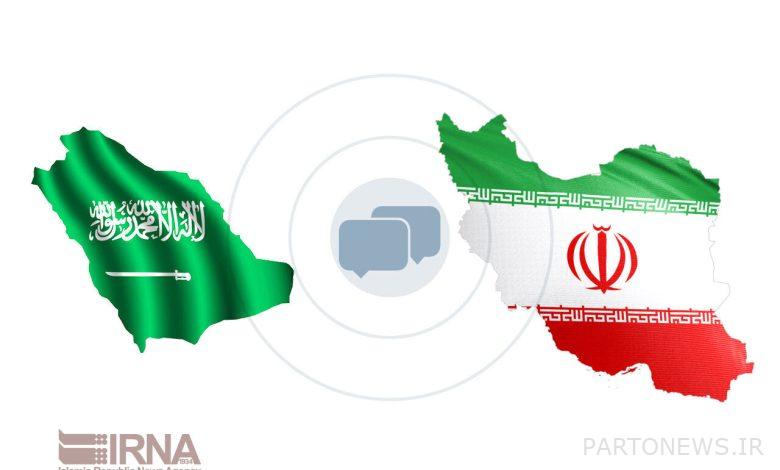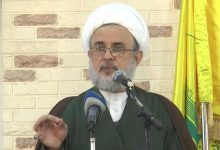Al-Saud’s reasons for negotiating with Iran

After six years of strained relations between Iran and Saudi Arabia, the two major countries of the Islamic world have started talks last year with the aim of resolving differences behind the negotiating table and resuming relations. In this context, four rounds of talks have been held between the officials of the two countries so far, and it seems that both sides are hopeful about the process of these talks.
The Saudi Foreign Minister recently confirmed the holding of the fourth round of talks between Iran and Saudi Arabia on September 21 (September 21st) and expressed hope that the talks could pave the way for a settlement of issues between the two countries.
An Iraqi diplomatic source familiar with the recent meeting between Iran and Saudi Arabia also told the Arab Post that the final round of talks between Tehran and Riyadh took place inside Baghdad International Airport and that the atmosphere was “very positive”.
“Arab Post” news site, after confirming the news of holding talks between Iran and Saudi Arabia by the two countries, quoted some informed sources as claiming that Tehran and Riyadh have reached an agreement after four rounds of talks, the most important of which is to stop Saudi support for groups. The Iranian opposition mentioned Saudi investment in Iraq and Syria, the creation of an international road between Mashhad-Karbala-Mecca, and the reopening of the two countries’ embassies.
From the observers’ point of view, there are four main reasons for Riyadh’s tendency to negotiate:
The first reason is related to the international variable and the change of government in the United States. Saudi rulers always see the rise of Democrats in power in the United States to their detriment; According to them, democratic governments will allow Iran to play and act more at the regional level. The second reason for the negotiations is the revival of the Borjam agreement in Vienna.
The third reason is that the Saudis came to the conclusion that despite the huge costs, they still could not succeed in regional cases, such as the current war in Yemen. The fourth reason is the multifaceted rivalry between the members of the Gulf Cooperation Council, especially between Saudi Arabia and the United Arab Emirates.
Analysts see the Biden administration’s pressure on Saudi Arabia and the White House Democratic’s plan to review relations between the two countries in the run-up to the 2020 US presidential election as the main factor influencing Riyadh’s shift toward de-escalation with regional actors.1. Democrats enter White House and Riyadh’s frustration with Western allies
Tensions in the Middle East escalated with the victory of former Republican militant President Donald Trump over the Republican spectrum. He sought reconciliation between the Arab countries and the Zionist regime in order to form a coalition against the Islamic Republic of Iran by strengthening the Hebrew-Arab axis. Thus, Trump’s “maximum pressure” campaign against Iran was to the liking of these regional actors.
With Trump’s defeat in the 2020 US election and Joe Biden’s reliance on the presidency, the page turned. Major analysts see the Biden administration’s pressure on Saudi Arabia and the White House Democratic Party’s plan to review relations between the two countries in the run-up to the 2020 US presidential election as the main factor influencing Riyadh’s shift toward de-escalation with regional actors.
This issue first manifested itself in issues such as the suspension of arms sales to Riyadh, the launch of the case of the assassination of Jamal Khashgeji, the 9/11 case, and the severance of Biden’s direct contact with “Muhammad bin Salman.” This situation, on the eve of the coming to power of the US Democratic Government, led Saudi Arabia to move towards de-escalation of tensions with Qatar, Turkey and Iran, and manifested itself in Riyadh’s readiness to end the war in Yemen.
In fact, Saudi Arabia’s “hard follow-up” strategy with the United States during the Trump era played a very important role in increasing the level of tension with Iran. Such a development for Saudi Arabia could be formulated in the Biden period in the context of the transition from a “hard follow-up” strategy to a “soft balance” strategy, and it was expected that the reduction of systemic support from Saudi Arabia at the regional level would pave the way for Riyadh to move aggressively. .
Ahmad Dastmalchian, Iran’s former charge d’affaires in Saudi Arabia, believes that Saudi Arabia, given the experience of recent years, is somehow confronted with the realities of the region and has come to the conclusion that it can not place its eggs in the basket of a trans-regional foreign country. It does not have a good fate for the great powers.
According to the former diplomat, Saudi Arabia failed in the developments in Lebanon, Syria, Qatar and Yemen, and now it is seen that the United States no longer supports him in issues such as the war in Yemen. Therefore, based on these facts, it has decided to take a new approach.
۲. Positive process of sanctions lifting negotiations
Saudi Arabia was one of the countries that strongly opposed the nuclear deal in July 2015. Promoting Iran’s position on the world stage was not something that Riyadh and other Arab actors in the region could easily cope with. Both the Kingdom of Saudi Arabia and other countries in the region believed that if the crisis of Iran’s nuclear activities was resolved and its relations with the countries of the world moved towards normalization, they would be in a quandary and isolation.
Despite the sabotage of the Hebrew-Arab axis, a nuclear deal was born. Improving Iran’s regional position and normalizing Tehran’s relations with the world in the aftermath led Saudi leaders to realize that Iran’s regional power and influence had increased and that the balance of power in the changing regions was in Iran’s favor.
After the failure of Trump’s policy of maximum pressure, Saudi Arabia and other regional rivals in Iran realized that dialogue and the continuation of nuclear negotiations could give more control and control over nuclear activities. Meanwhile, after rejecting Saudi Arabia’s application for membership in the new round of nuclear talks, the Saudi rulers expressed their intention to negotiate with Iran in order not to lag behind the Vienna talks.
3. The Saudis in the swamp of Yemen
Saudi Arabia, together with some countries such as the UAE, Bahrain, Sudan and the United States, formed the so-called Arab-American coalition on March 26, 2015, and began its aggression against Yemen in an operation called “Storm of Determination,” but in the years In the past, some Saudi allies withdrew from the coalition, and Abu Dhabi has now transformed from an old ally into a rival to Riyadh in southern Yemen.
The Saudis have come to the conclusion that despite the huge costs, they have not been able to succeed in regional cases, such as the current war in Yemen. Yemeni developments on the ground are always in favor of the popular resistance forces. The Saudi-Emirati coalition forces recently withdrew from their dozens of positions in the south and east of al-Hudaidah province in western Yemen and retreated to the city of al-Khukha in the province.
On the other hand, the forces of the 808th Brigade of the Saudi Coalition, which have been stationed in Socotra, Yemen since 2018, have recently retreated from the island. The situation in Marib is such that the forces of the Yemeni army and popular committees have reached the Marb gate from three directions, and in the east, they have found complete control over Hadramaut Road, which in practice can be said to have completed the siege of the city and fallen militarily.
On the other hand, with the erosion of the Yemeni crisis, the differences between the Arab coalitions have become more apparent. For example, Yemen was the starting point for the convergence of Saudi Arabia and the UAE in the early years of their union, and at the beginning of the cooperation between Riyadh and Abu Dhabi, there was no news of a dual path of Arab allies in the region. It led to their separation and even confrontation with each other.
Following its withdrawal from Afghanistan and the weakening US presence in the region, Riyadh, the White House’s most important Arab ally in the region, began to work hard to resolve its sensitive issues, including the Yemeni war and its exit from the quagmire. So Al-Saud sought an excuse to improve relations with Tehran and get out of the Yemeni quagmire.Another important issue is the irresponsible withdrawal of the United States from Afghanistan and its impact on the behavior of the Saudis. The United States was expelled from Afghanistan with humiliation at a cost of more than $ 2 trillion in Afghanistan and more than 2,400 troops killed.
Also, according to the Baghdad-Washington agreement, all US troops must leave Iraq in the near future. In fact, with the expulsion of the Americans from the West Asian region, the Saudis are becoming more passive and isolated.
Thus, Saudi Arabia, as the most important Arab ally of the United States in the region, has begun to try to resolve its sensitive issues, including the war in Yemen and getting out of the quagmire of this war; Therefore, Riyadh is looking for a suitable opportunity and an excuse to improve the relationship and get out of the Yemeni swamp.
In its first attempt to resolve the Yemeni war and reduce its losses in the war, Saudi Arabia opened ties with the Islamic Republic of Iran. Various sources report that the war in Yemen was one of the topics discussed in the first round of talks between Riyadh and Tehran.
4. Coup in the Arab Coalition
However, Saudi Arabia is the largest economy in the Arab world thanks to its underground reserves; In recent years, however, the UAE has been overtaking Saudi Arabia in attracting foreign investment, importing goods and technological services. The two Arab Gulf states have embarked on fierce rivalry over influence in West Asia and elsewhere; A competition that extends from East Asia to Africa.
The use of multiple tools to develop regional influence has led each of them to adopt different strategies in the optimal management of regional order. On the one hand, Riyadh has increased regional competition with the ideology of Wahhabism, and on the other hand, Abu Dhabi with the tools of development and economic influence; Competitions that have fueled hidden and deep differences beneath a thin layer of alliance. There are rivalries between Abu Dhabi and Riyadh in different geopolitical, geocultural and geoeconomic dimensions.
In December of this year, following the news of the visit of Sheikh Tahnoon bin Zayed, the UAE national security adviser, to Iran, the regional media, especially the Arab media, analyzed the trip and the Arab countries’ approach to Iran.
Abdul Bari Atwan, a well-known analyst in the Arab world and editor-in-chief of the Rai Al-Youm newspaper, wrote in an article: “They are returning to Iran.”
“While the Central Arab countries are in a state of passivity and diplomatic conflict and internal and external tensions, the countries of the Persian Gulf region are witnessing unprecedented movements to return to Iran these days,” said Abdul Bari Atwan, editor-in-chief of the Ray Al-Youm newspaper.Necessities of creating change in the relations between Tehran and Riyadh
The multidimensional difficulties of Iran-Saudi Arabia relations, which today face each other in numerous regional cases, are not easily solved. Nevertheless, it can be hoped that the issues will be resolved step by step by de-escalating tensions and continuing political negotiations between the two countries.
Therefore, although one should not be optimistic that their regional disputes will be resolved soon, at least one can expect bilateral crises to be controlled and reduced, and subsequently to pave the way for cooperation to reduce regional crises between the two countries.
What can currently change the horizon of relations between the two countries is “mutual trust”. The two countries must work together to control the crises in the Middle East and eliminate any competition resulting from these crises, and to put the train of bilateral relations and understanding on track.
In this regard, the transition of Tehran and Riyadh from mutual distrust and the beginning of constructive interaction can be considered as a starting point for de-escalation; In a way that with constructive views and dialogue-oriented method, these two important countries of the region and the Islamic world work together in the framework of common interests to achieve peace, stability and development within the region and enter a new chapter of interaction by overcoming differences.
From the observers’ point of view, actions in this direction, such as trying to confront extremism in the region and working together in this field, based on the common interests they have, is itself an important step that can be considered by the two countries in the short term.
Establishing a new multilateral regional security framework centered on Iran and Saudi Arabia, away from the interference of trans-regional intervening countries, is an inevitable and undeniable necessity for reducing tensions and resolving regional crises. Undoubtedly, such a framework will guarantee the promotion, deepening and strengthening of political relations between the two countries, a factor of stability in the sensitive and strategic region of the Middle East.
.

